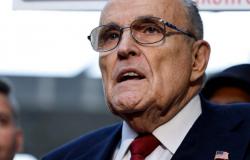(Bloomberg Opinion) — There’s just no getting past the supremacy of the dollar, much as skeptics of American influence wish for it or lonely yen bulls cry for relief. The greenback has been frequently tipped to retreat, only for it to blow away everything in front of it. This resilience might not last, but as long as it does, it reminds a world once in thrall to China’s ascent that the US is the essential economic force. Just ask all the central bankers quizzed as much, if not more, about the Federal Reserve’s intentions as their own. Sovereignty can be relative.
Events billed as heralding a pullback have barely made a dent: Japan’s decision to end eight years of negative interest rates fizzled in markets; the country’s finance minister has resorted to jawboning the yen stronger, and traders are handicapping the prospects of intervention by Tokyo. Even projections of rate cuts by the Fed aren’t doing it: Reductions are likely to be synchronous among the biggest authorities, preventing any major currency from outshining the dollar. This year was meant to be one in which the dollar fell, but a key index of its support is off to a strong start.
That’s the short term. Markets fluctuate and currencies, like stock and bond markets, have good years and times when things don’t turn out so stellar. But the buoyancy of the past quarter — and last couple of years — is built on something more than rate differences. The longer story of dollar firepower is one of a currency beating back challenge after challenge every few years. In the late 1990s, the coming euro was supposed to rival the dollar. A couple of years later, the current account deficit became the totem of all that was wrong. (When I ran Bloomberg’s foreign-exchange news in the early 2000s, the most commonly-cited reason for any tough trading day for the dollar was the trade shortfall. A close second was the belief that the US had quietly dropped the strong-dollar policy developed during the Clinton administration.)
Then came the subprime collapse and quantitative easing, followed by the would-be rise of the Chinese yuan. The worry du jour: the aggressive use of sanctions, which critics said would lead to a global de-dollarization. It’s as though the rest of the world scouts for a savior every few years. Assertions that the dollar will be undone are overblown, according to a recent paper by Steven B. Kamin, a former head of the Fed’s international finance division, and Mark Sobel, who served as deputy assistant secretary of the Treasury.
Kamin and Sobel write that dollar dominance is embedded in the global economic system in ways that are difficult to change. Even if it was to decline relative to another currency, the buck will remain first among equals. And the potential loss of access to US markets and the American banking industry would mean sanctions still matter greatly. The currency remains a vital geopolitical asset both to Washington, and its allies. The duo argue that whether or not the dollar stays top of the heap is the wrong question to ask. Better to inquire whether the factors that have supported such a place at the commanding heights will be sustained. They are confident it will, but add a chilling caveat: The biggest risk to the dollar may be the US itself.
“Dollar dominance is not a means in and of itself,” Kamin and Sobel wrote in the paper for the American Enterprise Institute. “It is instead a critical reminder of the need to run sound policies, behave responsively at home, and maintain the world’s trust.” (The two expanded on the subject in the Macro Musings podcast last month.)
The dollar is also a strategic gift, often under-appreciated in geopolitical discussions, which tend to focus on the South China Sea or Donald Trump’s threats against treaty partners. Nor is the US-led economic order, with the greenback at its core, wholly a product of victory in World War II. Born in 1913, the Fed was an important behind-the-scenes player in the Great War. As President Woodrow Wilson was trying to broker peace between the Allied and Central powers in 1916, the Fed fretted that American banks were too invested in the prospects of a triumph by Britain and France, something by no means certain. The central bank warned US lenders against over-exposure, a step that sent European markets into a tailspin, wrote Philip Zelikow in The Road Less Traveled: The Secret Turning point of the Great War, 1916-1917. Allied powers realized they would soon struggle to finance the war.
Wilson hoped that by squeezing them, he could bring about a resolution. His efforts were founded after Germany resumed unrestricted submarine warfare in the Atlantic, and the US joined the conflict. The Fed reversed its stance and aid began flowing again — generously. Just as well: Britain’s cash reserves were perilously close to depletion. The baton of monetary leadership was passed.
Let’s hear it for the greenback, more useful than an aircraft carrier, and with greater life expectancy. If there is a historical break with its rule, it’s unlikely to be something as obvious as a turn in the cycle of contemporary borrowing costs. It may be something more subtle, though clear in hindsight. For now, consider keeping those prognostications about the eclipse of the dollar in the barracks.
More From Bloomberg Opinion:
This column does not necessarily reflect the opinion of the editorial board or Bloomberg LP and its owners.
Daniel Moss is a Bloomberg Opinion columnist covering Asian economies. Previously, he was executive editor for economics at Bloomberg News.
More stories like this are available on bloomberg.com/opinion
©2024 Bloomberg LP
Unlock a world of benefits! From insightful newsletters to real-time stock tracking, breaking news and a personalized newsfeed – it’s all here, just a click away! Login Now!





